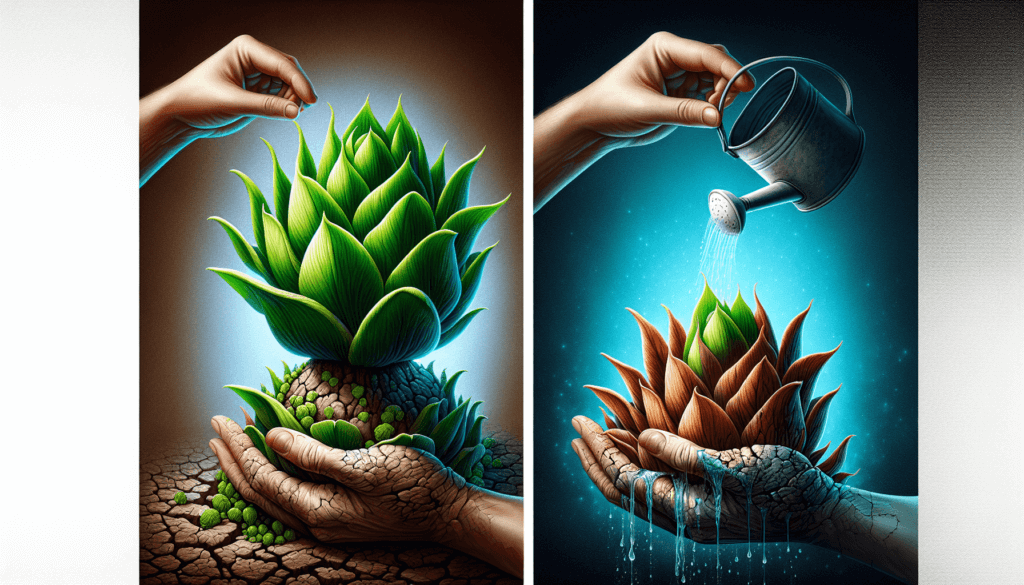If you’re looking for a low-maintenance houseplant that can bounce back from the brink of death, look no further than the Resurrection Plant. As its name suggests, this fascinating botanical wonder has a unique ability to appear lifeless and dormant, only to miraculously revive with just a touch of water. In this article, discover the essential tips and tricks to ensure your Resurrection Plant thrives, including its preferred environment, watering schedule, and how to properly rejuvenate this natural marvel. Say goodbye to wilted plants and hello to the resilient beauty of the Resurrection Plant.
Light requirements
Indoor lighting
When it comes to providing the right light for your resurrection plant, it’s important to find a balance. While these plants can tolerate a range of light conditions, they generally prefer bright but indirect light. Placing your plant near a window with filtered light or using a sheer curtain to diffuse the sunlight can be beneficial. However, it’s important to avoid direct sunlight, as it can scorch the leaves.
Outdoor lighting
If you decide to keep your resurrection plant outdoors, it’s crucial to place it in an area with partial shade. Direct sunlight for prolonged periods can be damaging to the delicate foliage. Choosing a spot where the plant receives morning sun and afternoon shade is ideal. Additionally, if you live in a region with hot summers, providing some dappled shade during the hottest part of the day can help prevent heat stress.
Watering
Frequency
One of the remarkable features of the resurrection plant is its ability to survive long periods of drought and revive when exposed to water again. However, it’s still essential to water your plant regularly to keep it healthy. Generally, watering every two to three weeks is sufficient, but this can vary depending on factors such as air humidity and temperature.
Watering techniques
When watering your resurrection plant, it’s crucial to give it a thorough soak. Place your plant in a tray or saucer filled with water and allow it to sit for about 10-15 minutes. This will ensure that the roots absorb enough moisture. Afterward, remove the plant from the water and allow any excess water to drain completely. Avoid overwatering, as it can lead to root rot.

Temperature and humidity
Ideal temperature
Resurrection plants thrive in temperatures between 65°F and 75°F (18°C to 24°C). It’s important to avoid extreme heat or cold, as it can stress the plant. Keep it away from drafts, air conditioning vents, or heaters, as sudden temperature fluctuations can be detrimental.
Humidity levels
Maintaining adequate humidity levels is beneficial for the health of your resurrection plant. Aim for a humidity level of around 40% to 60%. If the air in your home is dry, you can increase humidity by misting the plant with water or placing a tray with water near the plant. However, be cautious not to let the plant sit in standing water to avoid root rot.
Soil and potting
Suitable soil type
Resurrection plants prefer well-draining soil that retains some moisture but doesn’t become waterlogged. A mixture of peat moss, perlite, and sand can create an ideal growing medium. This combination provides good drainage while also retaining enough moisture for the plant’s needs.
Potting requirements
Choose a pot that has drainage holes to allow excess water to escape. This will prevent water from accumulating in the root zone and causing rot. When repotting, select a pot just slightly larger than the plant’s root ball. Avoid using containers that are too big, as excessive soil can retain too much water and drown the plant.

Fertilization
Choosing the right fertilizer
Resurrection plants have modest fertilization needs. Using a balanced, water-soluble fertilizer with equal amounts of nitrogen, phosphorus, and potassium is suitable. Look for a fertilizer with a ratio of 10-10-10 or similar. Avoid using fertilizers high in nitrogen, as they can promote excessive foliage growth at the expense of overall plant health.
Frequency of fertilizing
During the growing season (spring and summer), fertilize your resurrection plant once a month. Dilute the fertilizer according to the manufacturer’s instructions and apply it directly to the soil. In the winter, when the plant is dormant, it doesn’t require fertilization.
Pruning
Pruning techniques
Pruning your resurrection plant helps maintain its shape and encourages healthy growth. Use clean and sharp pruning shears or scissors to remove dead, damaged, or excessively long branches. Additionally, pruning can be done to limit the size of the plant or shape it according to your preference. Make sure to sanitize your tools before and after pruning to prevent the spread of diseases.
When to prune
The best time to prune your resurrection plant is during its active growing season, which is typically in the spring and summer. This allows the plant to recover more quickly from the pruning cuts and promotes new growth. Avoid pruning during winter dormancy, as the plant is more susceptible to stress during this period.
Propagation
Methods of propagation
Resurrection plants can be propagated through division or by taking stem cuttings. To propagate through division, gently separate the offsets from the main plant and plant them in their own pots. Alternatively, you can take stem cuttings with at least two nodes and place them in a well-draining soil mix. Keep the cuttings moist and provide them with indirect light until they root.
Best time for propagation
The ideal time to propagate your resurrection plant is during its active growing season in the spring or early summer. The plant is more responsive to root production and growth during this period. However, it’s worth noting that these plants have a high tolerance for propagation and can often be successfully propagated at other times of the year as well.
Pest control
Common pests
While resurrection plants are relatively pest-resistant, they can occasionally be affected by mealybugs, spider mites, or aphids. These pests can cause damage to the leaves or suck sap from the plant, leading to weakened growth.
Natural pest control methods
To control pests on your resurrection plant, you can try natural methods such as spraying the plant with a mixture of water and mild dish soap or using neem oil. These solutions can help deter pests and reduce their population. It’s important to ensure complete coverage of the plant, including the undersides of leaves where pests often hide. Regularly inspect your plant for any early signs of infestation for prompt treatment.
Dormancy period
Signs of dormancy
During the dormancy period, your resurrection plant may show signs of decreased growth and withering leaves. The foliage may become pale or even turn brown. This is a natural part of the plant’s life cycle, and it’s essential not to panic when you observe these changes.
Caring for the plant during dormancy
When your resurrection plant enters its dormancy period, reduce watering frequency to once a month or when the soil feels completely dry. Provide it with cool temperatures between 55°F and 65°F (13°C to 18°C). Maintain a lower level of light intensity, as the plant’s metabolic activity decreases during this time. Limit fertilization and avoid pruning until the plant begins to show signs of new growth.
Common issues and troubleshooting
Yellowing leaves
Yellowing leaves on a resurrection plant can indicate various issues, including overwatering, underwatering, or nutrient deficiencies. Assess your watering habits, adjust as necessary, and ensure the plant receives adequate light and proper nutrients. If the problem persists, check for pests or consider repotting in fresh, well-draining soil.
Wilting or shriveling
Wilting or shriveling leaves often occur due to underwatering. Conduct a thorough moisture check of the soil and adjust your watering schedule accordingly. Increase humidity levels by misting the plant or placing a tray with water nearby. If these measures don’t resolve the issue, inspect the roots for signs of rot or disease.
Browning tips
Browning leaf tips are usually a sign of dry air or inconsistent watering. Increase humidity levels around the plant by misting or using a humidifier. Ensure the soil is consistently moist but not waterlogged. Avoid using water that contains high amounts of minerals, as this can contribute to tip burn. Consider adjusting the plant’s placement to avoid drafts or temperature extremes.
By following these guidelines for light, watering, temperature, soil, fertilization, pruning, propagation, pest control, dormancy, and troubleshooting, you can ensure the optimal care for your resurrection plant. With proper attention, your plant will thrive and continue to enchant with its unique ability to resurrect from a dormant state.


